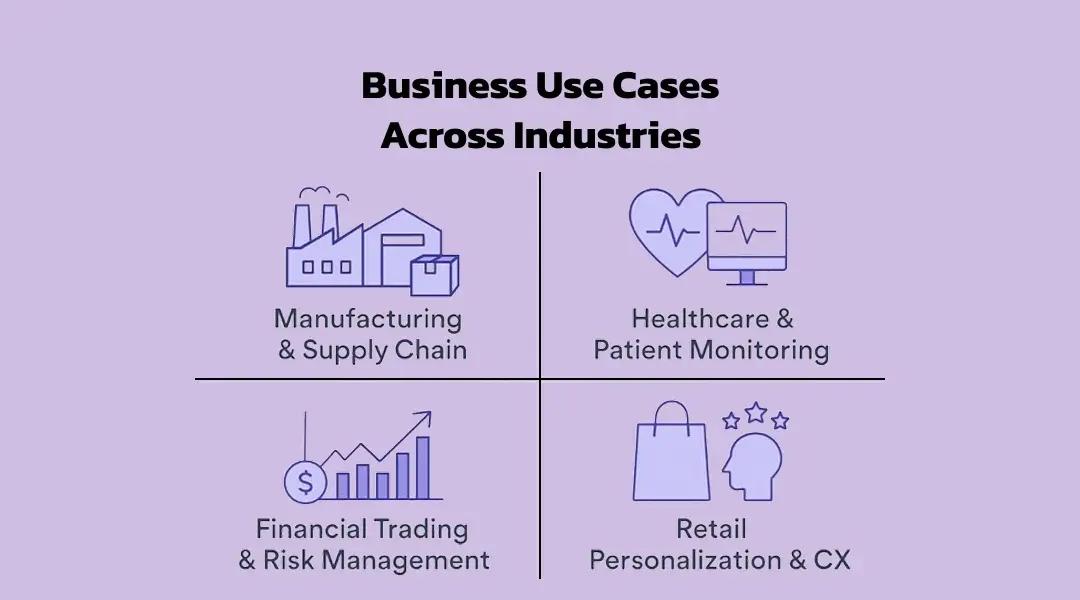The Rise of Multimodal AI Agents in Real-Time Decision-Making
I’ve been in enough boardrooms to know this: real-time decision-making is where good strategies either come alive or quietly fail. Data is pouring in from sensors, transactions, customer chats, video feeds, even machines talking to other machines. Yet most organizations are still waiting for overnight reports before acting.
That gap is exactly where multimodal AI agents are starting to matter. They don’t just analyze a spreadsheet or a single image. They combine text, voice, images, sensor signals all at once to guide a decision while the moment is still unfolding.
Why Real-Time Decision-Making Needs Multimodal AI
Operational lag is expensive. A plant manager who learns about a defect two hours late has already produced a batch of scrap. A financial analyst who spots an anomaly after market close can’t prevent losses.
By fusing data streams, AI agents for business shorten the time between signal and action. Instead of dashboards that only inform, you get AI-powered decision systems capable of suggesting or triggering responses instantly.
The Challenge of Data Silos & Latency
I’ve lost count of how many projects stall because “data lives everywhere.” Cameras, ERP systems, IoT sensors, customer tickets — each in its own silo. Even when you connect them, latency creeps in: data pipelines, ETL jobs, overnight refreshes.
Multimodal AI for operations only works if ingestion and reasoning happen as the data lands. That means stream processing, well-designed APIs, and a ruthless focus on latency budgets.
Value of Instant Cross-Channel Reasoning
Think about an autonomous AI agent supervising a warehouse. It watches camera feeds, reads barcode scans, listens to voice commands, and monitors temperature sensors. If a worker shouts “Stop!” because a pallet tips, the agent shouldn’t take minutes to correlate the audio with the video feed. It needs to halt the robot now.
That’s the magic: cross-channel reasoning — or, less dramatically, the system making sense of multiple inputs at once.
Core Technologies Behind Multimodal AI Agents
LLMs, Vision-Language Models, Speech-to-Text
Large language models bring text fluency. Vision-language systems connect imagery to semantics. Speech-to-text bridges human conversation with structured commands. Together, they form the cognitive layer.
Sensor Fusion & Streaming Analytics
Below that sits sensor fusion: algorithms blending telemetry, video, and audio. And real-time analytics frameworks (Kafka, Flink, etc.) keep the river of data flowing without bottlenecks.
Business Use Cases Across Industries

Manufacturing & Supply Chain
I helped a client install AI decision support systems on their assembly line. The agents processed camera inspections, vibration sensors, and operator notes, catching defects within seconds. Scrap dropped by 40%.
Logistics teams use similar tools to reroute shipments dynamically, based on weather feeds and fleet GPS.
Healthcare & Patient Monitoring
Hospitals are experimenting with AI agents in healthcare that monitor vitals, read clinical notes, and even parse patient speech for distress. One pilot flagged silent hypoxia in ICU patients by merging pulse-ox data with subtle changes in voice.
Financial Trading & Risk Management
Here, real-time AI analytics is already table stakes. Multimodal systems watch price feeds, news sentiment, and analyst calls, letting traders gauge risk before headlines fully circulate.
Retail Personalization & CX
Retailers deploy AI agents for productivity in stores: cameras read shelf stock, mobile apps track shopper paths, and conversational kiosks answer questions. Decisions about restocking or discounts happen mid-aisle, not after closing.
Benefits for Organizations
Faster decisions & reduced errors: Machines excel at cross-referencing data streams humans can’t juggle in real time.
Cost savings and productivity gains: Less downtime, fewer mistakes, smoother workflows. (A client trimmed 15% off operational costs after adopting real-time automation with AI.)
Enhanced customer experience: Responses feel timely and personal instead of reactive and generic.
Challenges & Ethical Considerations

Let’s not romanticize it. There are hazards.
Data privacy & security: Continuous feeds mean continuous exposure if governance is sloppy.
Bias in multimodal models: If training data skews, your agent will, too — across every modality.
Human-in-the-loop strategies: Full autonomy is tempting but dangerous. High-stakes environments still need people verifying or overriding agent recommendations.
How to Implement Multimodal AI Agents
Assessing Readiness & Infrastructure
Start with brutal honesty: do you actually capture the signals you want the agent to use? Without clean, real-time data, you’re training a sprinter on a broken treadmill.
Choosing Vendors / Building In-House
If speed is key, off-the-shelf platforms may work. If you need bespoke reasoning (like fusing sonar, audio, and supply data), consider building with a partner. (KriraAI has implemented both approaches for clients.)
Integration Tips & KPIs
Plan for incremental rollouts. Set clear KPIs: decision latency, error rate, operator trust. And measure them religiously.
Future Outlook: Agentic AI & Continuous Learning
Agentic AI trends are shifting fast. Tomorrow’s systems won’t just follow pre-coded rules; they’ll learn continuously, negotiating actions with humans and other agents. That’s the future of AI-driven decision making — collaborative rather than authoritarian.
Also, expect sector-specific specialists: manufacturing safety agents, clinical triage agents, even conversational shop-floor copilots built by an AI Voice Agents Company or the Best AI Voice Agent Agency you already work with for voice bots. (Yes, the same teams behind AI Call Agents are experimenting with multimodal reasoning.)
Conclusion
I’ve seen projects soar and others sink under their own ambition. The difference isn’t the algorithm; it’s whether the team treated multimodal AI agents as a clear business instrument rather than a science fair demo.
Start small, measure hard, keep a human near the kill switch and build from there.
FAQs
They’re AI systems that interpret and act on several data types; text, audio, video, sensors at the same time to guide or automate decisions.
Manufacturing, healthcare, finance, logistics, and retail all benefit from faster, more accurate decisions through live data processing.
Only with safeguards. Always add human-in-the-loop protocols for safety-critical environments.
Track decision latency, accuracy, error cost, and downstream productivity. Start with a single process before scaling.
Continuous learning and agent collaboration, systems that adapt as conditions change instead of freezing at deployment.

CEO
